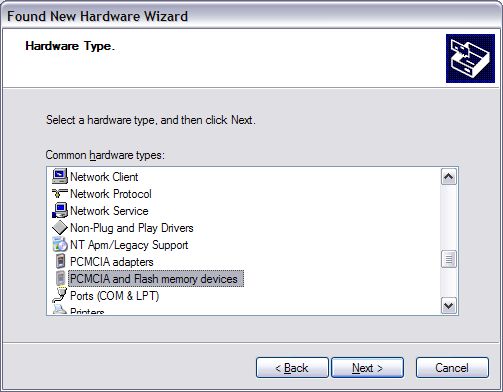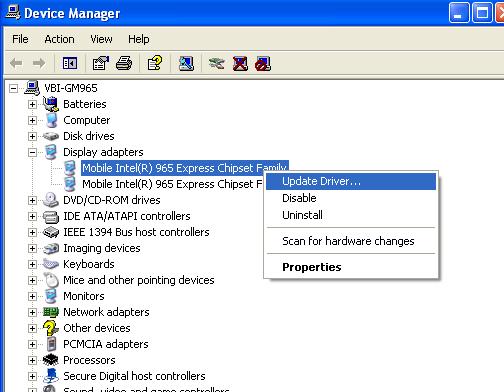- Generic Pcmcia Network Card Driver Windows 7 Free
- Generic Pcmcia Network Card Driver Windows 7 Windows 10
PCMCIA SRAM card driver for windows 7. So I have this card and I'm trying to get it to read in Windows 7 on an old Lenovo ThinkPad T60. I know that this already sounds ridiculous. The card shows up in the device manager as PCMCIA UNKNOWNMANFACTURER. Some solutions I've read say to use the 'generic' driver and it should work. Legacy PROWIN32 and PROWIN64 download packages provide PROSet, driver, ANS, FCoE, and DCB support for Windows 7. and Windows Server 2008 R2. Regular webpacks provide Intel® PROSet support for operating systems Windows 8.1., Windows Server 2012., Windows Server 2012 R2., Windows® 10, Windows Server 2016., or newer supported operating systems. And make sure your computer has the driver installed for that Card Bus Slot. Step 2) Install Memory Card Explorer. Step 3) Insert your PCMCIA Flash Card. XP will show this as a new device. If the driver doesn’t load automatically then go to here for further instructions on how to load a Generic Pcmcia Flash Card Driver.
Generic Pcmcia Network Card Driver Windows 7 Free
Pcmcia Driver For Window 7 free download - Windows 7 (Professional), Intel Network Adapter Driver for Windows 7, Windows 7 (Ultimate), and many more programs. Browse to the folder where you extracted the driver and click Ok About Wireless LAN Driver: Windows OSes usually apply a generic driver that allows systems to recognize the wireless component. However, in order to use all available features of this hardware, you must install the appropriate.
Popular PCMCIAPC_CARD-GENERIC-1748 Downloads
| PCMCIAPC_CARD-GENERIC-1748 Driver Update Utility |
| Oxford OX16PCI952 Driver |
| Oxford OX16PCI954 Driver |
| Oxford OX16C95x Communications port Driver |
| OEM Computers Inc. Compact Flash OX16CF950 Driver |
| Megapower MP-952PR2 Driver |
| Oxford High Speed Communications Port Driver |
| PPA International NetMos 9735 PCI Serial Port Driver |
| Megapower MP-954R4 Driver |
| OEM Computers Inc. OX12PCI840 PCI Parallel port (Windows XP) Driver |
| Naxos Tecnologia NX 4 PCI-RJ Driver |
| Naxos Tecnologia NX 8 PCI-RJ Driver |
| OEM Computers Inc. Compact Flash OX16CF950 Driver |
| Acrosser ACS-R1001 Driver |
| Acrosser ACS-R1000 Driver |
| Acrosser ACS-B1086 Driver |
| Acrosser ACS-B1086 Driver |
| Sunrich CB-2S Driver |
| Acrosser AR-ES5630FL Driver |
About Hardware IDs
A device Hardware ID (HWID) is a set of numbers and letters that uniquely identifies any device. For example, different models of Motherboards, Graphics Cards, Printers and Network Interface Cards would have their own unique Hardware ID.
The general format for a Hardware ID is <Bus Type><Vendor ID>&<Device ID>&<Additional IDs>.
The Vendor ID takes the form 'VEN_XXXX' where XXXX is a 4 digit code unique to the manufacturer.
The Device ID format is 'DEV_YYYY' where YYYY is a 4 digit code unique to that manufacturer's device.
Hardware IDs are useful because they help identify the manufacturer and model of every hardware device inside, or attached to, your computer.


Each Hardware ID is assigned to a particular device by the device manufacturer. Windows operating systems such as Windows 10 use the Hardware ID to match to a specific INF file. INF files are used to install the correct device drivers - that's the software that lets your computer communicate with the device in the most efficient manner.
While a particular device driver is associated with specific Hardware ID, that driver may be compatible with other devices as well. In that case, the INF file would identify one or more Hardware IDs as an exact match, and provide a list of Compatible Hardware IDs for that driver. In many cases, the Compatible Hardware IDs will look similar, with the identifier having only minor variations, particularly in the Device ID portion.
How to Install Drivers


Once you download your new driver, then you need to install it. To install a driver in Windows, you will need to use a built-in utility called Device Manager. It allows you to see all of the devices recognized by your system, and the drivers associated with them.
Tech Tip: If you are having trouble deciding which is the right driver, try the Driver Update Utility for PCMCIAPC_CARD-GENERIC-1748. It is a software utility that will find and install the right driver automatically.
Open Device Manager
In Windows 10 & Windows 8.1, right-click the Start menu and select Device Manager
In Windows 8, swipe up from the bottom, or right-click anywhere on the desktop and choose 'All Apps' -> swipe or scroll right and choose 'Control Panel' (under Windows System section) -> Hardware and Sound -> Device Manager
In Windows 7, click Start -> Control Panel -> Hardware and Sound -> Device Manager
In Windows Vista, click Start -> Control Panel -> System and Maintenance -> Device Manager
In Windows XP, click Start -> Control Panel -> Performance and Maintenance -> System -> Hardware tab -> Device Manager button
Install Drivers With Device Manager
Locate the device and model that is having the issue and double-click on it to open the Properties dialog box.
Select the Driver tab.
Click the Update Driver button and follow the instructions.
In most cases, you will need to reboot your computer in order for the driver update to take effect.
Visit our Driver Support Page for helpful step-by-step videos
Generic Pcmcia Network Card Driver Windows 7 Windows 10
If you are having trouble finding the right driver, stop searching and fix driver problems faster with the Automatic Driver Update Utility. Many computer problems are caused by missing or outdated device drivers, especially in Windows 10. If your deskttop or laptop is running slow, or keeps crashing or hanging, there is a good chance that updating your drivers will fix the problem. Automatic updates could save you hours of time.